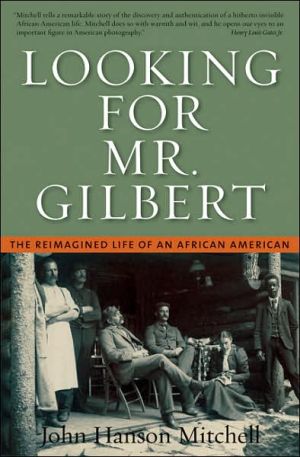Looking for Mr. Gilbert: The Reimagined Life of an African-American
In the mid 1970s, John Hanson Mitchell discovered over two thousand antique glass plate negatives in the attic of an old estate in Massachusetts. At the time, he believed the photographs to be the work of William Brewster, the nineteenth century ornithologist and conservationist. But, as a result of a tip from a Harvard research assistant, Mitchell came to believe that the plates were the work of Brewster's assistant, a little-known African American named Robert Gilbert. In his quest to...
Search in google:
In the mid 1970s, John Hanson Mitchell discovered over two thousand antique glass plate negatives in the attic of an old estate in Massachusetts. At the time, he believed the photographs to be the work of William Brewster, the nineteenth century ornithologist and conservationist. But, as a result of a tip from a Harvard research assistant, Mitchell came to believe that the plates were the work of Brewster's assistant, a little-known African American named Robert Gilbert. In his quest to uncover the story of Gilbert, Mitchell’s trail leads from the labyrinthine archives of Harvard's Museum of Comparative Zoology to the countryside of Virginia; from the haunts of American expatriates in Paris to the culturally rich world of African Americans in Boston at the turn of the last century. Gilbert remained as illusive as the pale image on the original glass negatives that he created more than a hundred years ago, but with careful deconstruction, Mitchell was able to make visible this invisible man. The investigation of the haunting photographs of landscapes and people slowly brings Gilbert into focus as a quiet, unassuming Renaissance man who forged on in the face of social pressures and the iron ceiling of American racism.Kirkus ReviewsAnother artful piece of creative nonfiction from Mitchell (Following the Sun, 2002, etc.) rediscovers the life of a multitalented African-American assistant. While researching a book on the New England landscape, the author uncovered in the attic of an old farmhouse a trove of glass negatives from the early 1900s. At first he thought ornithologist and conservationist William Brewster had taken them, but Mitchell came to understand that many of the photos were produced by Robert Alexander Gilbert, who worked with Brewster for many years. In prose as smoothly cadenced as the Concord River so frequently depicted in those images, Mitchell takes readers along on his odyssey to learn more about the man who was Brewster's inseparable amanuensis. A man of sure bearing and an ardent piano player, Gilbert was inspired by the writings of Booker T. Washington and W.E.B. Du Bois, but perhaps more closely followed the Emersonian ideal of the upright individual. His lonely courage saw him through all the adversities black people experienced at the turn of the 20th century. Polymath Gilbert is just the kind of character suited to Mitchell's temperament, allowing him to ramble afield and digress into ruminations on such matters as the nature of photography, whose invention made it possible "to use existing light to halt the linear flow of time and pluck a discontinuity from an otherwise continuous flow of events." The author also traces the origins of American ornithological concerns (in which both Brewster and Gilbert figured, the latter as a shadow player), looks into the history of Harvard's Museum of Comparative Zoology (where Gilbert worked) and travels to Paris, where Gilbert landed after a failedattempt to market his shoe polish. In other words, this particular life story keeps Mitchell's restless curiosity well exercised. A handsome addition to the author's tapestry of his Massachusetts purlieus, by now as closely observed as Gilbert White's Selborne. (Photos throughout)
\ Kirkus ReviewsAnother artful piece of creative nonfiction from Mitchell (Following the Sun, 2002, etc.) rediscovers the life of a multitalented African-American assistant. While researching a book on the New England landscape, the author uncovered in the attic of an old farmhouse a trove of glass negatives from the early 1900s. At first he thought ornithologist and conservationist William Brewster had taken them, but Mitchell came to understand that many of the photos were produced by Robert Alexander Gilbert, who worked with Brewster for many years. In prose as smoothly cadenced as the Concord River so frequently depicted in those images, Mitchell takes readers along on his odyssey to learn more about the man who was Brewster's inseparable amanuensis. A man of sure bearing and an ardent piano player, Gilbert was inspired by the writings of Booker T. Washington and W.E.B. Du Bois, but perhaps more closely followed the Emersonian ideal of the upright individual. His lonely courage saw him through all the adversities black people experienced at the turn of the 20th century. Polymath Gilbert is just the kind of character suited to Mitchell's temperament, allowing him to ramble afield and digress into ruminations on such matters as the nature of photography, whose invention made it possible "to use existing light to halt the linear flow of time and pluck a discontinuity from an otherwise continuous flow of events." The author also traces the origins of American ornithological concerns (in which both Brewster and Gilbert figured, the latter as a shadow player), looks into the history of Harvard's Museum of Comparative Zoology (where Gilbert worked) and travels to Paris, where Gilbert landed after a failedattempt to market his shoe polish. In other words, this particular life story keeps Mitchell's restless curiosity well exercised. A handsome addition to the author's tapestry of his Massachusetts purlieus, by now as closely observed as Gilbert White's Selborne. (Photos throughout)\ \








